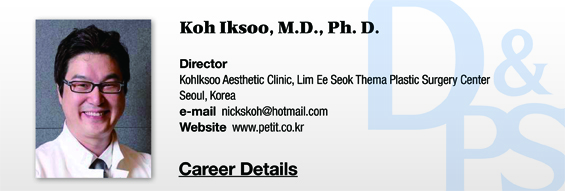More patients are complaining of dermal filler migration. Many of the surgeons also frequently ask if it is possible for injected filler to migrate without external stimulation. The answer is yes, it is possible. However, several factors should be considered; whether physical force was used, filler properties, and the site of injection. In this article, we will examine what can cause the migration of injected filler and how we can resolve this problem.
Types of Filler Migration
The cause of migration could vary depending on the time of migration. If the filler has visibly moved immediately after treatment, it is most likely caused by the surgeon’s fault. This can occur most frequently in the nose and nasolabial grooves. The nose of a female patient may be soft and forceful injection can cause the filler to be pushed into surrounding areas.
In nasolabial grooves, dermal filler should be injected into the medial groove with dense, hard tissues. The frontal cheekbones have softer tissues. As filler naturally gravitates toward softer tissues rather than hard tissues, it is likely to move toward the frontal cheekbone. To avoid this, one should use his/her fingers to guide the spread of the filler during injection.
If the migration happens some time after treatment, it is likely caused by the patient. Some very sensitive patients tend to touch the filler after treatment, trying to mold it themselves. As the filler is liquid, physical stimulation could cause it to migrate. However, as it is highly viscous and is wrapped in a capsule, it rarely moves from normal daily activities.

Figure 1. Pushing down the injected filler with fingers can cause it to migrate.
Likelihood of Migration and Filler Property
The collagen filler is originally in the solid form but is mixed into a solution before injection. After injection, the carrier dissipates and it turns back to the solid form. The filler could move before the carrier is absorbed but will not move after it is absorbed.
[Advertisement] A-One LITE(Facial Diagnosys System) – Manufacturer: BOMTECH(www.bomtech.net)
Many new hyaluronic acid (HA) dermal fillers with excellent viscosity are being released. However, high viscosity means stronger tendency to be separated from surrounding tissues and easily move when force is applied. A phenomenon called “tunneling” occurs due to low friction with surrounding tissues. Personally, I hope the manufacturers would produce fillers with better properties for maintenance in the human body rather than just high viscosity.
-To be continued





















